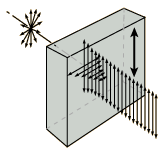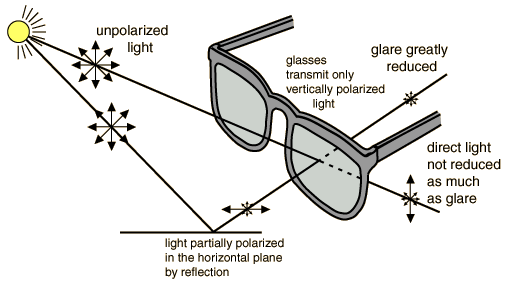Polaroid Material
Polaroid is the trade name for the most commonly used dichroic material. It selectively absorbs light from one plane, typically transmitting less than 1% through a sheet of polaroid. It may transmit more than 80% of light in the perpendicular plane. The word "polaroid" usually refers to polaroid H-sheet, which is a sheet of iodine-impregnated polyvinyl alcohol. A sheet of polyvinyl alcohol is heated and stretched in one direction while softened, which has the effect of aligning the long polymeric molecules in the direction of stretch. When dipped in iodine, the iodine atoms attach themselves to the aligned chains. The iodine atoms provide electrons which can move easily along the aligned chains, but not perpendicular to them. Light waves with electric fields parallel to these chains are strongly absorbed because of the dissipative effects of the electron motion in the chains. The direction perpendicular to the polyvinyl alcohol chains is the "pass" direction since the electrons cannot move freely to absorb energy.

|
Index
Polarization concepts |

